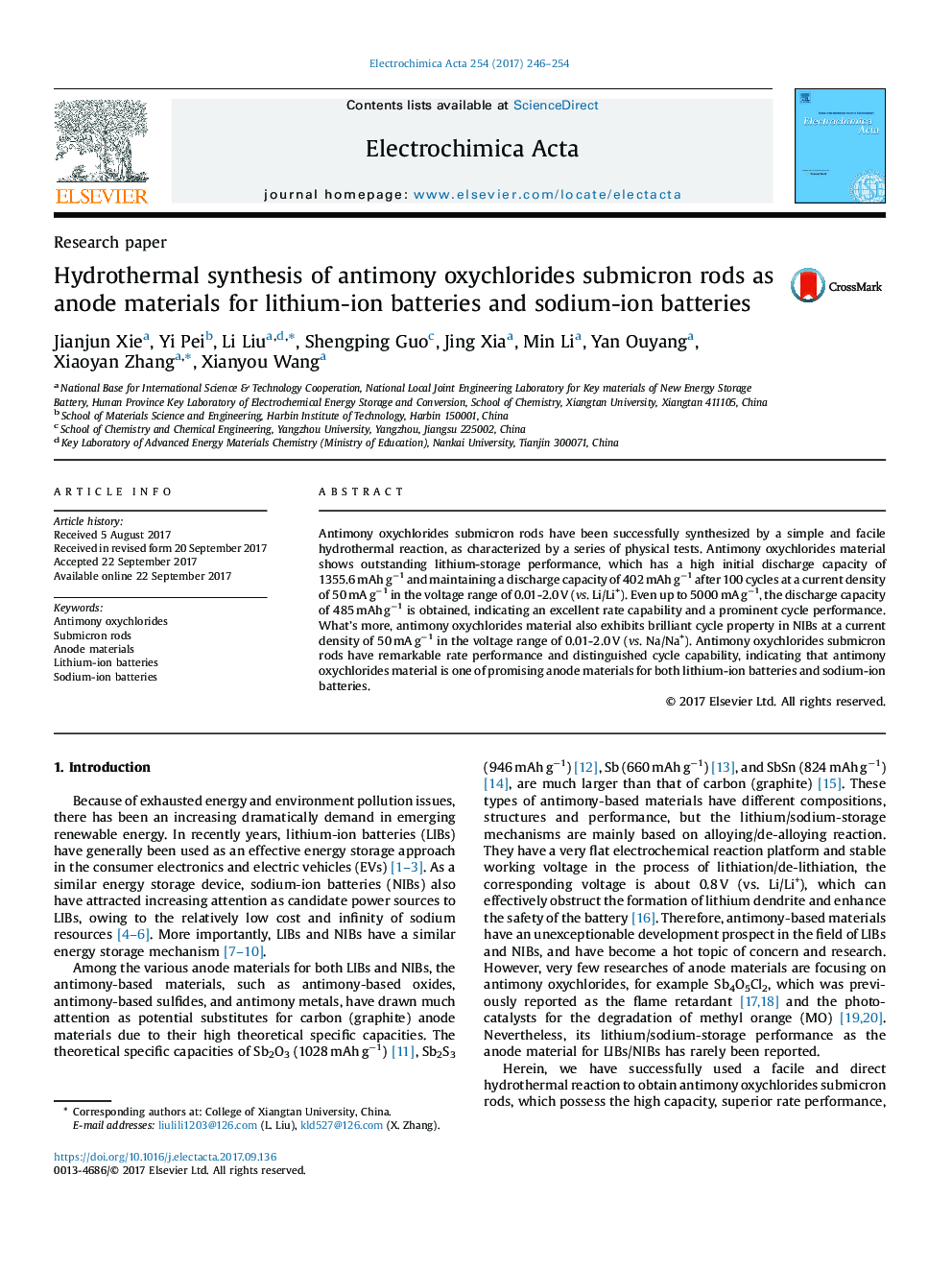| Article ID | Journal | Published Year | Pages | File Type |
|---|---|---|---|---|
| 6469822 | Electrochimica Acta | 2017 | 9 Pages |
â¢Antimony oxychlorides submicron rods are successfully prepared by a simple and facile hydrothermal reaction.â¢The lithium/sodium-storage performance of antimony oxychlorides as the anode material for lithium-ion batteries or sodium-ion batteries have rarely been reported.â¢The material presents remarkable cycling performance and outstanding rate capability in lithium-ion batteries.â¢The material also exhibits superior sodium-storage capabilities in sodium-ion batteries.
Antimony oxychlorides submicron rods have been successfully synthesized by a simple and facile hydrothermal reaction, as characterized by a series of physical tests. Antimony oxychlorides material shows outstanding lithium-storage performance, which has a high initial discharge capacity of 1355.6 mAh gâ1 and maintaining a discharge capacity of 402 mAh gâ1 after 100 cycles at a current density of 50 mA gâ1 in the voltage range of 0.01-2.0 V (vs. Li/Li+). Even up to 5000 mA gâ1, the discharge capacity of 485 mAh gâ1 is obtained, indicating an excellent rate capability and a prominent cycle performance. What's more, antimony oxychlorides material also exhibits brilliant cycle property in NIBs at a current density of 50 mA gâ1 in the voltage range of 0.01-2.0 V (vs. Na/Na+). Antimony oxychlorides submicron rods have remarkable rate performance and distinguished cycle capability, indicating that antimony oxychlorides material is one of promising anode materials for both lithium-ion batteries and sodium-ion batteries.
